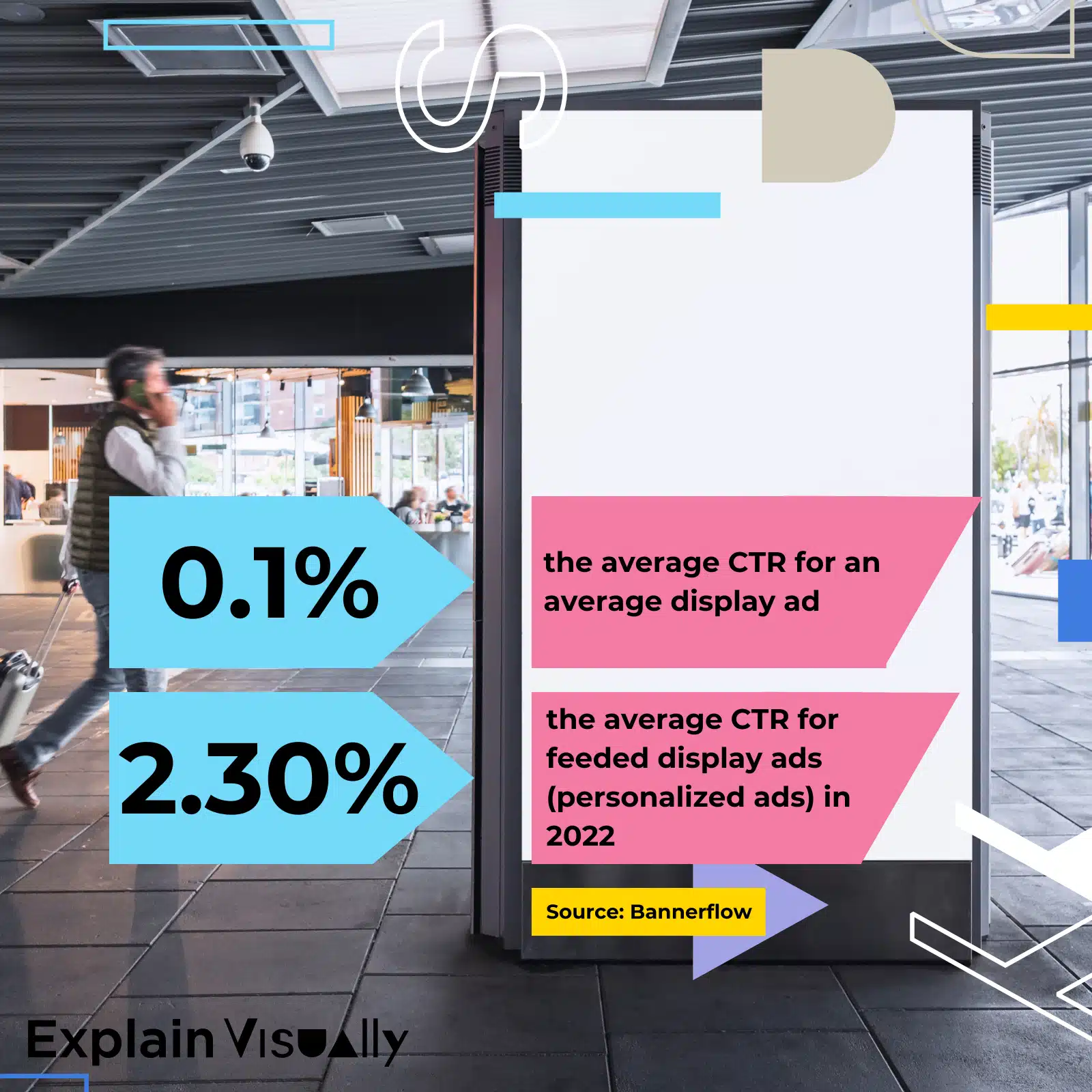In the context of modern digital marketing, animated banners have become a popular format across various platforms, especially on social media posts and Google ads, where businesses need to attract and retain user attention within short spans of time. By integrating motion, color, and branding elements, animated banners allow companies to deliver more complex messages while maintaining engagement with their target audience.
Creation Process
The creation of these animated ads is made simpler with the help of modern tools like animation banner makers or online ad creators, which allow users to design professional-quality banners without needing extensive graphic design experience. Tools like Creatopy, Canva, and Google Web Designer enable businesses to create dynamic ads that feature moving graphics, interactive buttons, and sleek transitions. With a wide range of templates available, marketers can customize their ads to suit their specific campaign needs, ensuring that the ad design aligns with the brand identity.
Through animation effects, companies can guide users’ focus to specific elements of the ad, such as calls-to-action, promotional offers, or new products, increasing the likelihood of generating conversions. As a result, creating animated banner ads has become a highly effective and accessible method to enhance digital advertising strategies.
1. Creating Animated Banner Ads
Tools for Creating Animated Banner Ads
When it comes to creating animated banner ads, there are a variety of tools that make the process simple and accessible, even for those without coding or design expertise. Tools like Creatopy, Canva, and Google Web Designer offer a user-friendly interface to create animated display ads without writing a single line of code. These platforms typically offer pre-designed templates that can be customized to fit your brand’s unique style, allowing you to add brand elements such as logos, color schemes, and fonts with ease.
For example, in Creatopy, users can start by choosing a template and then modify it by inserting their own visuals, text, and animations. This flexibility allows marketers to create professional-quality animated ad campaigns that reflect their brand identity, ensuring consistency across all marketing channels. These tools also support various formats like animated GIF banners, AMPHTML ads, and HTML5, allowing for broad compatibility across platforms like social media, websites, and Google ads.
Animation Effects and Techniques
To make your banner ads truly stand out, incorporating animation effects is essential. These effects are used to create a sense of movement, drawing the viewer’s attention to important elements such as key messages and calls-to-action. For example, subtle transitions can guide the viewer’s eye to focus on specific information, while more dynamic motions can emphasize a product launch or promotional offer.
One of the most important techniques is to make the animation smooth and purposeful. By using elements like scrolling text, fade-ins, and image transitions, you can create engaging and interactive animated display ads that keep the user’s attention from start to finish. Additionally, employing a cohesive animated theme that complements your brand elements helps reinforce your message, making the ad more memorable and effective at driving conversions.
2. Optimizing Animated Ad Performance
Choosing the Right File Types and Sizes
Selecting the correct file type for your animated banner is critical to ensure optimal performance across various platforms. HTML5 is the preferred format for most animated banner ads for flexibility and interactivity, as it provides high-quality animations while being compatible across devices and platforms. HTML5 is also favored for its ability to create rich, interactive ads without the need for third-party plugins.
Other formats include AMPHTML ads, which are specifically optimized for mobile devices. These ads load faster, offer an improved user experience, and are great for ensuring smooth performance across multiple mobile environments. However, the creative options with AMPHTML ads can be somewhat limited compared to other formats.
For simpler animations, the GIF format is often used. While GIFs are universally supported and widely recognized, they have limitations in terms of color depth and resolution, which may result in lower-quality animations compared to HTML5 or MP4. Lastly, MP4 files are ideal when high-quality video animations are needed, but they tend to have larger file sizes, which can impact load times.
Balancing File Size and Quality
A critical part of optimizing ad performance is balancing the file size with the quality of the animation. Large files can slow down page load times, leading to poor user experience and higher bounce rates. To avoid this, ensure that your animated banner remains under recommended file size limits (e.g., 150KB for display ads) while maintaining high visual quality. Compressing images and using scalable vector graphics (SVGs) can help reduce the file size without sacrificing visual fidelity.
Properly optimized file types such as HTML5, AMPHTML ads, and lightweight GIFs allow for efficient delivery of ads across platforms, ensuring a seamless user experience while still retaining the visual and interactive elements that make animated ads effective.
3. Best Practices for Animated Banner Ad Design
Color and Motion Use
Effective animated banner ads start with eye-catching colors and smooth motions that align with your brand’s palette. A colorful banner can grab attention, but it’s important to strike a balance between vibrant hues and harmony, ensuring the colors enhance rather than overwhelm. Motion should guide the viewer naturally toward important elements like the main message and CTA, without being distracting. Studies show that animated HTML5 banners have higher click-through rates (CTRs) than static ads, thanks to their engaging visuals and interactivity.
Storytelling Through Animation
Animation in banner ads can effectively tell a brief, compelling story, helping to emphasize key messages and increase the ad’s memorability. These animated ads allow businesses to visually highlight the main message while creating a narrative that flows smoothly through the animated theme and animated banner. According to marketing experts, video ads and GIF banners lead to higher engagement and brand recall rates than static banner ads.
Incorporating animation allows for a dynamic display of brand elements, guiding viewers through the storyline from the main message to the supporting details. This storytelling technique makes animated display ads more engaging and memorable. By integrating motion effects and visual transitions, you can effectively communicate your advertising campaign within the limited timeframe of an animated banner ad. Brands can use these animated themes to make a strong impression on their target audience and increase click-through rates (CTR).
Call-to-Action (CTA) Focus
A well-designed CTA is the cornerstone of any animated banner ad. The animation should draw the viewer’s attention naturally toward the CTA, whether it’s through a subtle motion effect, a change in color, or the placement of the CTA within the animation. Keep the CTA clear and concise, using action-oriented language such as “Shop Now,” “Learn More,” or “Subscribe.” Animated transitions, such as the CTA button appearing last or standing out with a contrasting color, can make it irresistible for the viewer to engage.
4. Common Mistakes to Avoid in Animated Banner Ads
Excessive Use of Text
One of the most prevalent mistakes in the design of animated banner ads is the tendency to overload them with text. This not only detracts from the visual appeal but can overwhelm the viewer, leading to disengagement. Instead of cluttering the ad with lengthy descriptions, prioritize concise messaging that effectively conveys the core idea. Leveraging the dynamic nature of animation to illustrate key points can significantly enhance viewer retention and engagement.
Color Discordance
Color selection is a crucial element in animated banners, as it directly impacts the viewer’s perception and emotional response. However, using clashing colors that compete for attention can result in visual chaos, distracting viewers from the primary message. A harmonious color scheme that aligns with your brand palette is essential for maintaining coherence and strengthening brand recognition. Thoughtfully chosen colors can not only draw attention but also evoke the desired emotional response from your audience.
Misaligned Animation Speeds
The pacing of animations is another critical factor in the effectiveness of animated banner ads. Inappropriate animation speeds, whether too fast or too slow, can disrupt the narrative flow, leading to confusion or disinterest. Ensuring that animations transition smoothly and align with the ad’s message will enhance clarity and maintain viewer engagement. Carefully consider the timing of your animations, particularly with regard to the CTA, ensuring it is highlighted at the right moment to encourage user interaction without overwhelming the viewer.
5. Measuring Success and Optimization
Tracking Engagement Metrics
Measuring the success of animated banner ads hinges on tracking essential engagement metrics, including click-through rates (CTR), conversion rates, and the average time users spend engaging with the ad. An average display ad CTR hovers at around 0.1%, but the higher CTR, the better. The average CTR for feeded display ads (personalized ads) in 2022 sat at around 2.30%, which is significantly higher than non-feed ads. This underscores the importance of monitoring these metrics to refine advertising strategies and continuously enhance performance.

A/B Testing
A/B testing, or split testing, serves as a critical tool for optimizing ad performance by comparing variations of an ad to determine which resonates best with the audience. Implementing A/B tests enables marketers to experiment with different ad creatives, including animation styles, calls to action (CTAs), and color schemes, ultimately leading to a better understanding of audience preferences. This iterative testing process allows brands to enhance their animated banner ads based on real user behavior, significantly improving campaign effectiveness.
6. Animated Ad Examples and Case Studies
Stanford University: Simplicity Meets Functionality
An excellent example of animated banner ads comes from Stanford University, which leverages a clean and impactful design. In this animated banner ad, the non-serif fonts in white against a red background immediately catch attention. The banner features a crest with symbols typically used in medicine, reinforcing the healthcare theme. Using minimal text, the ad utilizes a series of animated spheres popping one after another to form a brain shape, symbolizing health and intelligence. This animated banner ad balances minimalism with strategic animation to effectively convey the message without overwhelming the audience. The ad stands as a great example of blending animated graphics with a clear focus on the brand’s identity and objectives.

Source: Penji
Stanford University: Innovations in Education Technology
Another striking animated banner ad by Stanford University showcases its Innovations in Education Technology courses. The design includes animated icons like a globe, light bulb, and cogs, each representing various facets of education and innovation. Instead of animating every element, the ad uses motion selectively, avoiding clutter and emphasizing key messages. This approach allows the viewer to focus on the ad’s narrative while maintaining clarity. By using animated banner ad techniques and maintaining a balance between movement and stillness, the banner enhances user engagement without being overwhelming. It’s a prime example of how selective motion in an animated ad can improve the message’s impact.

Source: Penji
Nike Vaporfly 4% Flyknit Campaign: “Fast as F4%K”
The series of integrated digital ads to promote Nike’s new Vaporfly 4% Flyknit to support their ‘FAST AS F4%K’ campaign, designed by Carl Sherry, is another standout in the world of richly animated banner ads. This ad showcases the Vaporfly 4% Flyknit trainer, promoting its speed and cutting-edge design. The ad features bold typography and sleek animated transitions that communicate movement and agility, perfectly reflecting the product’s attributes. Through dynamic animated effects, the banner reinforces Nike’s brand values, engaging users with its innovative design and fast-paced narrative. This campaign is a testament to how rich animation can highlight product features and drive user engagement.

Source: Carl Sherry
Conclusion
Summary of Benefits
Animated banner ads provide a unique advantage in today’s digital marketing landscape by significantly boosting engagement and conversion rates. Through dynamic visuals and interactive elements, animated banners stand out on platforms, drawing the eye more effectively than static ads. This makes them especially powerful for conveying key messages quickly, driving the desired action from users. By leveraging color schemes, motion graphics, and well-placed CTAs, brands can communicate more memorably and effectively. Additionally, animated banners offer flexibility, allowing marketers to tailor the ads to specific audiences and platforms, such as Google Ads or social media posts. The result is a more personalized, engaging experience that leads to higher conversions.
Final Tips
For optimal results, adhering to the best practices for animated banner ads is essential. Start by ensuring your ads are visually appealing but not overwhelming. Keep text minimal and ensure the animation speeds are smooth and aligned with the ad’s messaging. Effective use of colors and animation effects can make a significant difference, but staying within your brand palette is important to maintain consistency. Regularly measure success using key engagement metrics like click-through rates and conversion rates and optimize the ad’s performance through A/B testing. Doing so will help identify the most effective elements, allowing you to adjust the ad creatives accordingly. This ongoing optimization is key to ensuring optimized performance and maximizing the return on your marketing investment.
By following these guidelines and continuously refining your approach, you can harness the full potential of animated banner ads, resulting in stronger audience engagement and measurable business growth.


